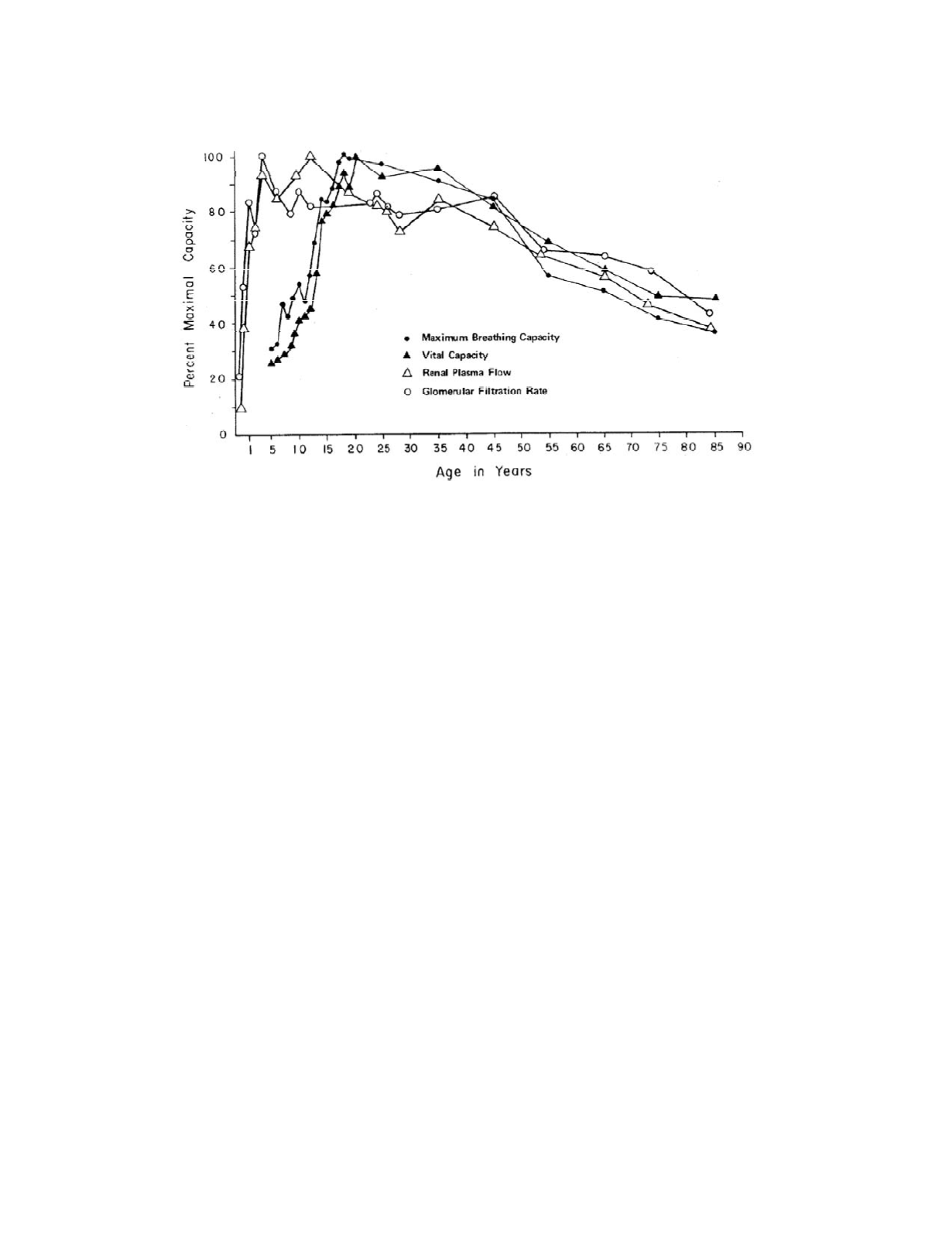
instance, in parallel with the age-related decline in
glomerular filtration rate (Rowe
et al.
1976a,
Avendano
et al.
1987). The decline in creatinine
clearance rate is not reflected in the plasma creati-
nine concentration, however. The concentration of
creatinine remains nearly constant even into extreme
old age because there is an age-related reduction in
muscle mass that results in a diminution in the creat-
inine production rate that just matches the
age-associated decline in the glomerular filtration
rate (Figure 6.8).
A striking example of age-related changes
appearing only later in life is the decrease in the
plasma concentrations of the female sex hormones in
women following menopause. The changes in the
reference frequency distributions for estradiol and
progesterone that occur as a result of menopause are
accounted for at the Massachusetts General Hospital
by listing a separate reference range for post
menopausal females (Jordan
et al.
1992).
Neither
the Massachusetts General Hospital nor the Johns
Hopkins Hospital present adult age-based reference
frequency distributions for any other analytes. This
does not mean that the effects of age are not clini-
cally significant for any of the other laboratory
studies available at these hospitals. Rather, it
suggests that most laboratorians and clinicians at
these two institutions have not yet fully integrated an
explicit recognition of the effects of aging into their
routine care of adults.
BIORHYTHMS
We often think of the body as maintaining a
steady state in which, for instance, the concentra-
tions of substances in the plasma remain constant
save for the effects of perturbations to the system,
such as the ingestion of a meal, which temporarily
upsets the balance and hence the plasma concentra-
tions of certain substances, such as glucose. In fact,
the body is in many ways not steady but rhythmic.
The most obvious of these rhythms is the daily
rhythm of wakefulness and sleep. This rhythm
induces a circadian (
circa
, around;
dies
, day) rhythm
in the secretion of a number of hormones including
growth hormone and adrenocorticotropic hormone.
The rhythmic secretion of adrenocorticotropic
hormone in turn imposes a circadian rhythm on the
secretion of and plasma concentration of cortisol.
Four phases can be identified: the minimal secretory
phase which occurs during the last few hours while
awake and for the first few hours of sleep and during
which the plasma cortisol concentration is low; the
preliminary nocturnal secretory phase which occurs
during the middle hours of sleep and during which
the plasma cortisol concentration has a number of
Biologic Variability
6-8
Figure 6.7
Selected measures of functional capacity of the lungs and the kidneys as a function of age. Mean maximum
breathing capacity, vital capacity, renal plasma flow, and glomerular filtration rate binned according to age groups in the origi-
nal reports. Reprinted from Bafitis H and Sargent F. 1977. Human physiological adaptability through the life sequence. J
Gerontol 32:402.


